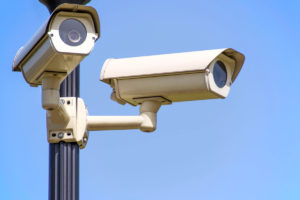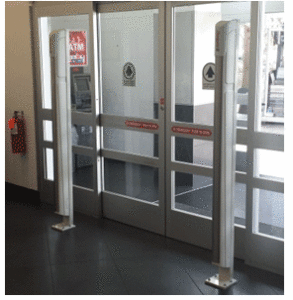
There are many ways for store owners to reduce the risk of employee theft and fraud. Background checks supplement interviews and screening questions on a job application. Manager training to know the signs and indicators that a worker may be engaging in theft activity of some sort is another preventative step. Electronic Article Surveillance systems and tags are helpful in deterring shoplifters and dishonest employees. Certainly Closed Circuit Television (CCTV), Public View monitors and mandatory package checks before leaving work all play a part in preventing internal criminal activity. One of the best tools an employer can use to reduce the chance they will even hire a thief in the first place is the use of pre-employment drug screening. The prospective employee would go to the lab, fill the cup and labs would send off the sample to have it checked for illegal substances. That has been the most common of the drug tests and many employers have relied on it to help them keep their stores profitable and safe.
Is this still an effective method for owners to use? With states loosening their own laws surrounding marijuana use it is a mixed bag. Not all states are legalizing it and it is still a federal crime to use, grow, distribute or possess it. So if you are in a state where it is still a crime to use marijuana and an applicant applies to a job with your company but he/she comes from a state where it has been “legalized” do you have them take a pre-employment drug test? What happens if they take the test and results show they use marijuana, do you not hire them even though it was “legal” where they came from? This can pose a dilemma for store owners. If you do hire them, do you put yourself at risk for discriminating against someone from your own state who failed and did not get hired based on that result?
Leaving the marijuana out of the equation for the moment, there is still room for drug testing in the workplace, both pre-screening and random drug testing of employees. Drug screening can identify other illegal substances in addition to marijuana. According to thebalancecareers.com, “A typical drug test for employment purposes screens for drugs including amphetamines, cocaine, marijuana, opiates, nicotine, and alcohol.” While you may decide to overlook positive results for marijuana you can still turn down applicants for the other drugs. States may be legalizing marijuana but the debates about the safety and effects of the drug on behavior remain a concern. Just because it is legal does not mean you necessarily want someone who uses this drug or any other drug working for your business. Pre-employment drug screening is still an effective tool in your efforts to combat theft and safety concerns.
Why test for drugs in the first place? By testing and screening out applicants who test positive you significantly reduce the risk of hiring someone who very well may steal from your store. It may be cash or merchandise but they have a habit to feed and they still have bills to pay and they are not going to feed that habit on a retail job. Working in the store gives them access to money and merchandise that will provide the resources for their addiction. Another reason to test is to keep your store safe. Someone who is illegally using drugs or coming to work under the influence of drugs or alcohol can be a cause of an accident or can be the victim of an injury in the workplace incurred while under the influence. Whether they cause the accident or are the victim of an accident, you can end up paying for it. There is also the safety of your other employees to consider. Someone under the influence of the wrong drugs can be unstable and volatile. What is it that is going to trigger a violent action on their part? Giving them a direction or task they don’t want to do? How about a customer that says something that sets off your employee. There is no place for violence or theft in the workplace and pre-employment drug screening can help prevent both from happening.
 When do closed circuit television malfunctions occur? I’m sure you can guess, it is always at the point when you need it most. I can’t recall the number of instances when I had a cash shortage I needed to look for and when I attempted to pull video through the DVR the video was already dropped or the camera wasn’t functioning. I remember having to look for an image of a suspect in a shoplifting incident and the picture was too grainy to be of any use due to a dirty camera lens or dome. One slightly embarrassing situation that stands out in my mind involved robberies that were taking place behind our store. I had developed a great working relationship with our local police department and they knew the quality of our camera system. Investigators came to me seeking assistance with outdoor camera footage to try to identify the criminals conducting the robberies. I pulled up video of the date and time in question and much to my chagrin the camera had a great shot of the ground directly underneath it. A power surge had impacted the programming of the pan/tilt/zoom (PTZ) camera and placed it in a default position. I had not noticed the problem in a timely fashion and could not recall how long it was before I did catch the issue. The good news was I was able to re-program the camera and eventually we did provide footage of an incident a little later that led to an arrest.
When do closed circuit television malfunctions occur? I’m sure you can guess, it is always at the point when you need it most. I can’t recall the number of instances when I had a cash shortage I needed to look for and when I attempted to pull video through the DVR the video was already dropped or the camera wasn’t functioning. I remember having to look for an image of a suspect in a shoplifting incident and the picture was too grainy to be of any use due to a dirty camera lens or dome. One slightly embarrassing situation that stands out in my mind involved robberies that were taking place behind our store. I had developed a great working relationship with our local police department and they knew the quality of our camera system. Investigators came to me seeking assistance with outdoor camera footage to try to identify the criminals conducting the robberies. I pulled up video of the date and time in question and much to my chagrin the camera had a great shot of the ground directly underneath it. A power surge had impacted the programming of the pan/tilt/zoom (PTZ) camera and placed it in a default position. I had not noticed the problem in a timely fashion and could not recall how long it was before I did catch the issue. The good news was I was able to re-program the camera and eventually we did provide footage of an incident a little later that led to an arrest.
